All images provided by Joel Ostlind.
Wyoming native Joel Ostlind is a self-taught artist who spent fifteen years of his life herding cattle on horses on large ranches throughout the American West. In 1990, he bid farewell to his cowboy days and moved with his wife and family to a home outside Big Horn, Wyoming. He signed up for a printmaking class at Sheridan College and built a home studio near the Big Horn Mountains. His drawings found new life as copper plate etchings depicting the full range of Western life, from Native American lodges to contemporary fly fishermen, telemark skiers and horses grazing under Wyoming skies. Ostlind gives us a look into his studio, his process, and perks of the job.
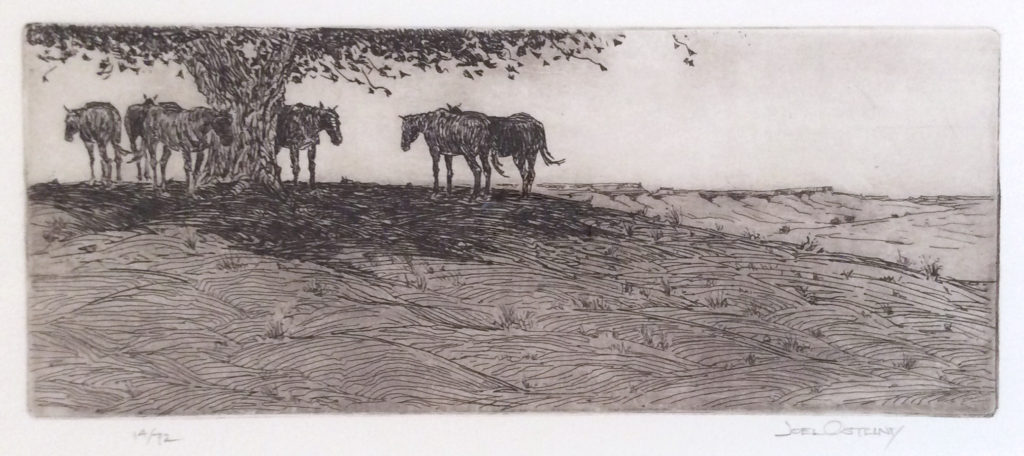
I built my studio. Wendy and I bought a little cabin home and pretty much paid for it with cowboy wages.
I scrounged and traded for a lot of material and built a nice studio, used it for 18 years, and then added on a straw bale addition. I traded dryland hay for lumber that had been in a train derailment. I worked for a fellow building a dance floor for a wedding– afterwards the father of the bride gave me the dance floor. The windows came out of a demolished old local home. I wanted lofted ceilings and needed support for the roof, so on a ranch we used to work on I cut down some beetle-kill pine and made two exposed trusses.

In the evening. In the morning. The thing is—I want to not quite fill, but dirty up one page in a sketchbook with drawings every day. For me, drawing in a sketchbook is like doing musical scales—keeping everything connected. And if after sketching you sit down to do a serious drawing you’re in a better spot than just hitting it cold.
I just started a new sketchbook, but this evening I’m going to an artist in residency talk. I’ll just sit in the back and draw people. One of my favorite places to draw is in the parking lot of a Walmart– just people going by; it’s all gestural. You just draw and draw. My wife, Wendy, and I went out to eat supper at a place with paper table cloths and jars of crayons on the table. I drew sketches of people working there. It was a nice meal.
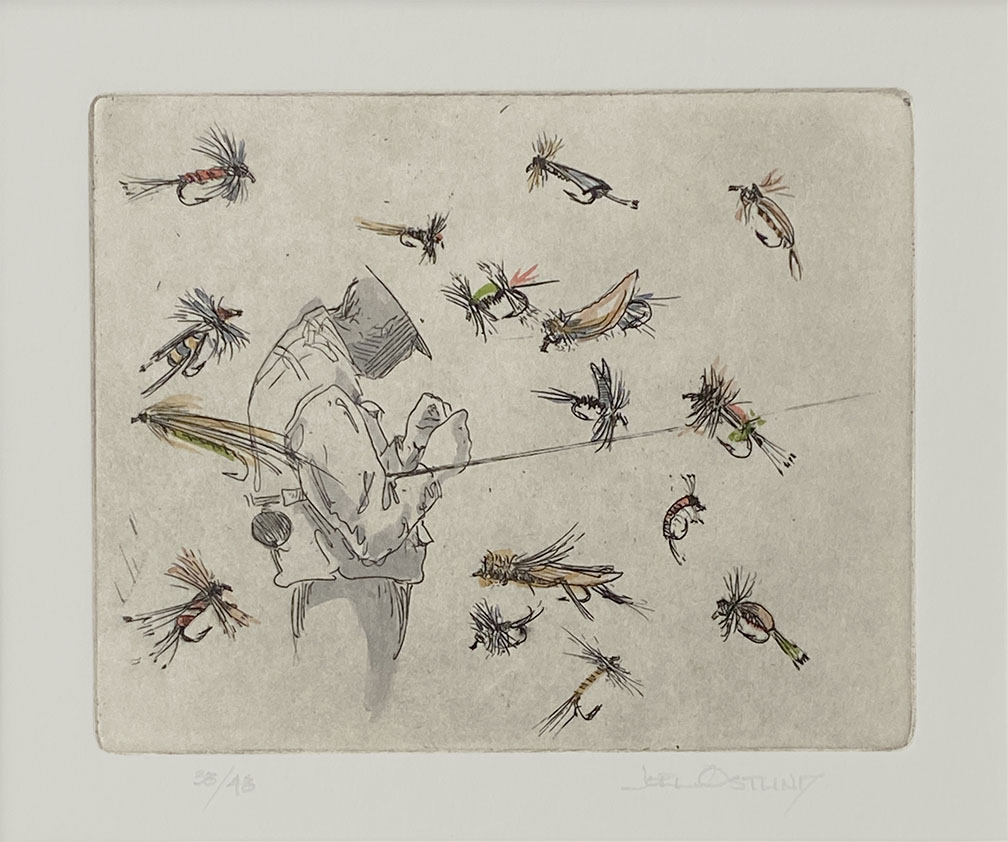
I had an art show at a local bank and had pen and ink and charcoal drawings displayed. People would call and look for more of the same pen and ink works, but they aren’t replicable. There is a nice correlation between pen and ink and etching. It’s a way to edition an image, so that each print is considered fine art.
Etching has been explored by people using a lot of computer technology. I leave it out. I like the feeling of old prints, and so I don’t try to incorporate a lot of new things. What I appreciate is the essence of those old-style hand drawn traditional prints.
I don’t really like narrative art but cowboys can be very gestural with physical labor– Gestures that are really fun to watch and draw.
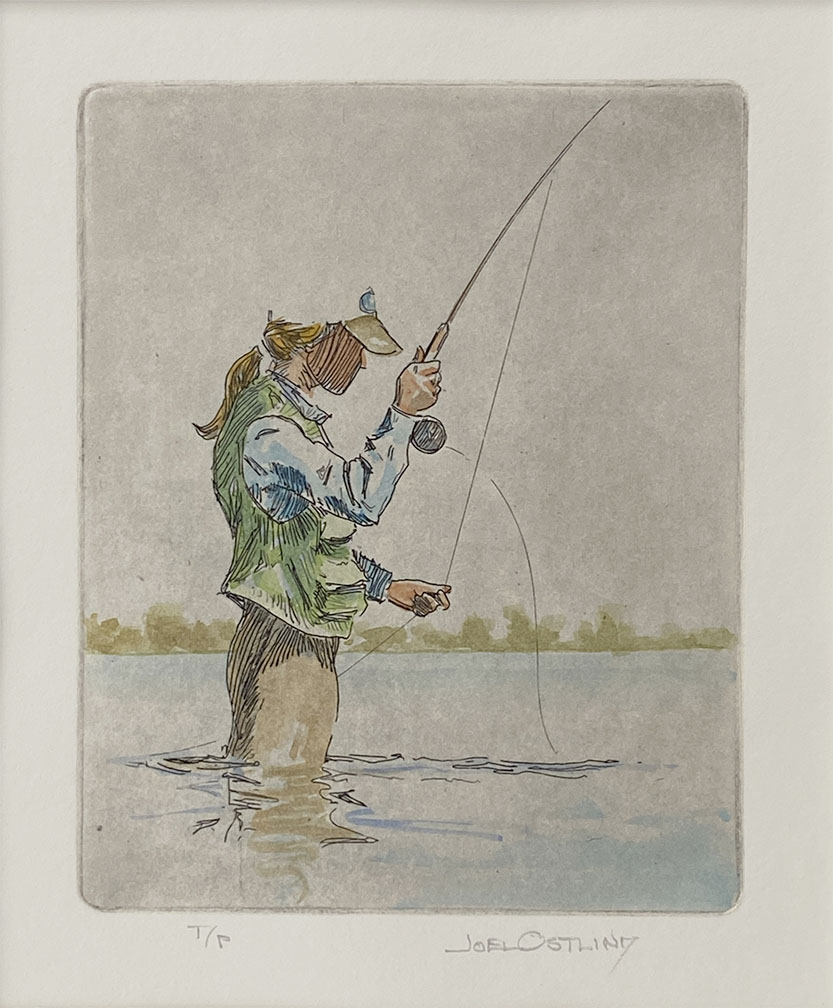

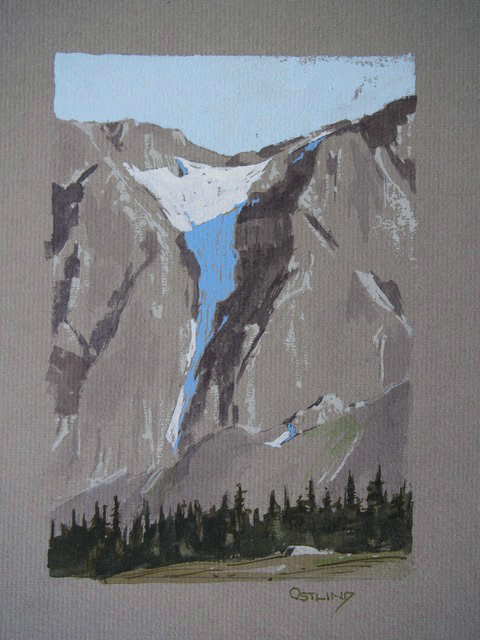
I think better with a pen and a sketchpad than a photograph. Sometimes a piece of art looks dead. What it feels like is someone tried to do a painting of a photograph rather than a more spontaneous painting.
It’s critical for me as a printmaker to print my own work, and I do tweak things here and there. It’s pretty unforgivable—any scratch is a problem that won’t go away very easily.
My favorite part is once I have completed an etching plate, I will proof it. Then what I do is I’ll get a 5-power magnifying glass and look at the printed lines. You see the dimensionality of etched lines and the property of the paper. It’s always fun to get a big look at the little world. Right there I can tell how I wiped the plate that time. The quality of the lines is really cool. In terms of all of the things that can go wrong – when it works it’s great.
My largest work has been 18” wide. I did several where I cut 6 x 18 inch plates and etched. Often times with a large etching, the work, for me, begins to look belabored, and I like a fresher etching. If they’re smaller you can do more with the right lines and less to fill in. James McNeil Whistler said that every art medium has kind of an optimal size, and I feel that with etching, small is better than large because each line takes on more dimension.

One time a friend of mine– I had ridden with him a couple of years– really good cowboy– He came by and visited me in my studio, and he was looking at a drawing I was working on.
He said, ‘so what’s going on?’
I said, ‘See that line?’ and showed a long graceful line in the drawing.
‘That’s like throwing a good loop.’
He stood there and looked at it a little bit. And he said, ‘yep.’
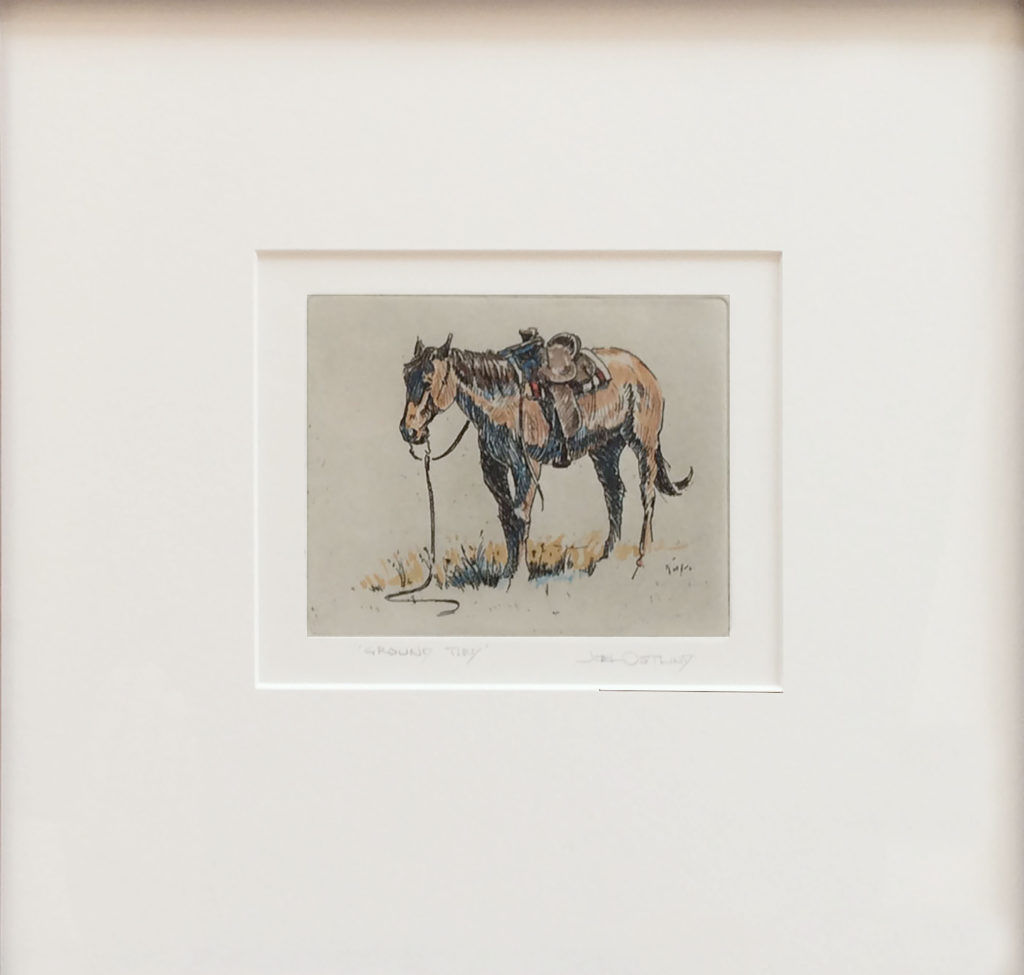
To see a complete collection of available work by Joel Ostlindd here, email art@korologosgallery.com, call 970.927.9668, or visit 211 Midland Avenue in Basalt, Colorado.